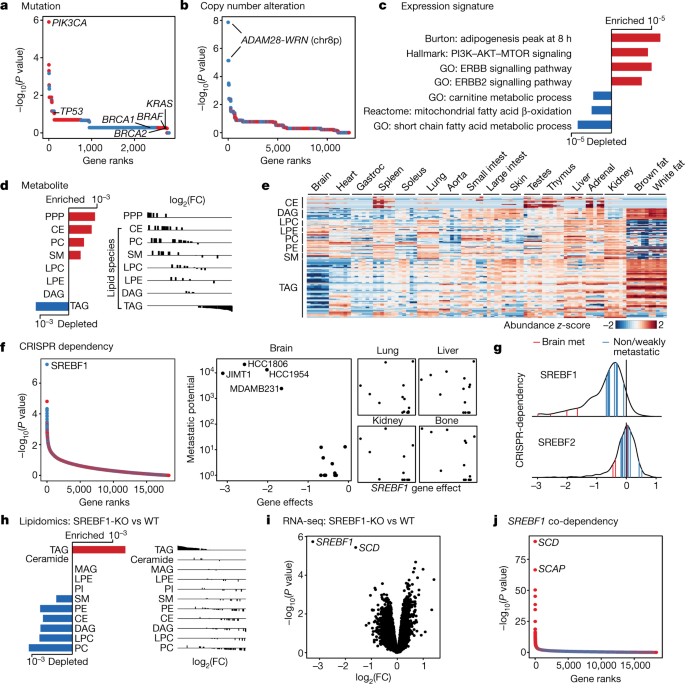Aliases for PIK3CA Gene
- GeneCards Symbol: PIK3CA 2
- Phosphatidylinositol-4,5-Bisphosphate 3-Kinase Catalytic Subunit Alpha 2 3 5
- PI3K 2 3 5
- Phosphatidylinositol 4,5-Bisphosphate 3-Kinase Catalytic Subunit Alpha Isoform 3 4
- Phosphoinositide-3-Kinase, Catalytic, Alpha Polypeptide 2 3
- Serine/Threonine Protein Kinase PIK3CA 3 4
- PtdIns-3-Kinase Subunit P110-Alpha 3 4
- Phosphoinositide 3-Kinase Alpha 3 4
- PI3K-Alpha 3 4
- Phosphatidylinositol-4,5-Bisphosphate 3-Kinase 110 KDa Catalytic Subunit Alpha 3
- Phosphatidylinositol 4,5-Bisphosphate 3-Kinase 110 KDa Catalytic Subunit Alpha 4
- Mutant Phosphatidylinositol-4,5-Bisphosphate 3-Kinase Catalytic Subunit Alpha 3
- Phosphatidylinositol-4,5-Bisphosphate 3-Kinase, Catalytic Subunit Alpha 2
- Phosphatidylinositol 3-Kinase, Catalytic, Alpha Polypeptide 3
- Phosphatidylinositol 3-Kinase, Catalytic, 110-KD, Alpha 3
- Phosphoinositide-3-Kinase Catalytic Alpha Polypeptide 4
- PI3-Kinase P110 Subunit Alpha 3
External Ids for PIK3CA Gene
- HGNC: 8975
- NCBI Gene: 5290
- Ensembl: ENSG00000121879
- OMIM®: 171834
- UniProtKB/Swiss-Prot: P42336
-
Phosphatidylinositol 3-kinase is composed of an 85 kDa regulatory subunit and a 110 kDa catalytic subunit. The protein encoded by this gene represents the catalytic subunit, which uses ATP to phosphorylate PtdIns, PtdIns4P and PtdIns(4,5)P2. This gene has been found to be oncogenic and has been implicated in cervical cancers. A pseudogene of this gene has been defined on chromosome 22. [provided by RefSeq, Apr 2016]
-
PIK3CA is the most recurrently mutated gene in breast cancer, and has been found to important in a number of cancer types. An integral part of the PI3K pathway, PIK3CA has long been described as an oncogene, with two main hotspots for activating mutations, the 542/545 region of the helical domain, and the 1047 region of the kinase domain. PIK3CA, and its interaction with the AKT and mTOR pathways, is the subject of an immense amount of research and development, and PI3K inhibition has seen some limited success in recent clinical trials. While monotherapies seem to be limited in their potential, there is a recent interest in pursuing PI3K inhibition as part of a combination therapy regiment with inhibition partners including TKI's, MEK inhibitors, PARP inhibitors, and in breast cancer, aromatase inhibitors.
GeneCards Summary for PIK3CA Gene
PIK3CA (Phosphatidylinositol-4,5-Bisphosphate 3-Kinase Catalytic Subunit Alpha) is a Protein Coding gene. Diseases associated with PIK3CA include Megalencephaly-Capillary Malformation-Polymicrogyria Syndrome and Congenital Lipomatous Overgrowth, Vascular Malformations, And Epidermal Nevi. Among its related pathways are Downstream signaling of activated FGFR2 and Translation Insulin regulation of translation. Gene Ontology (GO) annotations related to this gene include transferase activity, transferring phosphorus-containing groups and protein serine/threonine kinase activity. An important paralog of this gene is PIK3CB.
UniProtKB/Swiss-Prot Summary for PIK3CA Gene
Phosphoinositide-3-kinase (PI3K) phosphorylates phosphatidylinositol (PI) and its phosphorylated derivatives at position 3 of the inositol ring to produce 3-phosphoinositides (PubMed:15135396, 23936502, 28676499). Uses ATP and PtdIns(4,5)P2 (phosphatidylinositol 4,5-bisphosphate) to generate phosphatidylinositol 3,4,5-trisphosphate (PIP3) (PubMed:15135396, 28676499). PIP3 plays a key role by recruiting PH domain-containing proteins to the membrane, including AKT1 and PDPK1, activating signaling cascades involved in cell growth, survival, proliferation, motility and morphology. Participates in cellular signaling in response to various growth factors. Involved in the activation of AKT1 upon stimulation by receptor tyrosine kinases ligands such as EGF, insulin, IGF1, VEGFA and PDGF. Involved in signaling via insulin-receptor substrate (IRS) proteins. Essential in endothelial cell migration during vascular development through VEGFA signaling, possibly by regulating RhoA activity. Required for lymphatic vasculature development, possibly by binding to RAS and by activation by EGF and FGF2, but not by PDGF. Regulates invadopodia formation through the PDPK1-AKT1 pathway. Participates in cardiomyogenesis in embryonic stem cells through a AKT1 pathway. Participates in vasculogenesis in embryonic stem cells through PDK1 and protein kinase C pathway. In addition to its lipid kinase activity, it displays a serine-protein kinase activity that results in the autophosphorylation of the p85alpha regulatory subunit as well as phosphorylation of other proteins such as 4EBP1, H-Ras, the IL-3 beta c receptor and possibly others (PubMed:23936502, 28676499). Plays a role in the positive regulation of phagocytosis and pinocytosis (By similarity). ( PK3CA_HUMAN,P42336 )
-
PI 3-Kinases (phosphoinositide 3-kinases, PI 3-Ks) are a family of lipid kinases capable of phosphorylating the 3'OH of the inositol ring of phosphoinositides. They are responsible for coordinating a diverse range of cell functions including proliferation and survival.
- Cytogenetic band:
-
- Protein Symbol:
- P42336-PK3CA_HUMAN
- Recommended name:
- Phosphatidylinositol 4,5-bisphosphate 3-kinase catalytic subunit alpha isoform
Protein attributes for PIK3CA Gene
- Size:
- 1068 amino acids
- Molecular mass:
- 124284 Da
- Protein existence level:
- PE1
- Quaternary structure:
-
- Heterodimer of a catalytic subunit PIK3CA and a p85 regulatory subunit (PIK3R1, PIK3R2 or PIK3R3) (PubMed:26593112).
Interacts with IRS1 in nuclear extracts (By similarity).
Interacts with RUFY3 (By similarity).
Interacts with RASD2 (By similarity).
Interacts with APPL1.
Interacts with HRAS and KRAS (By similarity).
Interaction with HRAS/KRAS is required for PI3K pathway signaling and cell proliferation stimulated by EGF and FGF2 (By similarity).
Interacts with FAM83B; activates the PI3K/AKT signaling cascade (PubMed:23676467).
- Heterodimer of a catalytic subunit PIK3CA and a p85 regulatory subunit (PIK3R1, PIK3R2 or PIK3R3) (PubMed:26593112).
- Miscellaneous:
- The avian sarcoma virus 16 genome encodes an oncogene derived from PIK3CA.
Molecular function for PIK3CA Gene according to UniProtKB/Swiss-Prot KTS- gene cards lähteestä jatkoteksti: https://www.genecards.org/cgi-bin/carddisp.pl?gene=PIK3CA&keywords=PIK3CA

